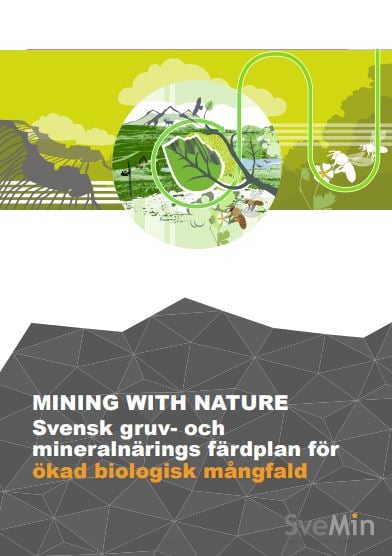Sustainability concerning biodiversity
Our goal is to contribute to increased biodiversity by 2030 in all regions where we operate.

Our operations require land exploitation for exploration, mining, enrichment, processing, recycling and transport. We also own forest that we manage from a sustainability perspective. In order to supply our operations while achieving our environmental goals, we operate in accordance with the mitigation hierarchy (figure 1), which is an accepted practice way to work with biodiversity. Systematically working with biodiversity based on the mitigation hierarchy means that we evaluate if we can:
● Firstly, avoid any impact
● Secondly, minimise any impact that cannot be avoided with mitigation measures
● Thirdly, restore any impact by, for example, environmental remediation.
● As a fourth measure, offset any residual impacts. Offsetting should only be used if all other reasonable mitigation measures have been taken to avoid and limit any negative impacts. We offset for the impact our operations have caused and strive towards carrying out measures that create a net gain for biodiversity.
Sound knowledge and Scientific basis
Our procedures require a sound knowledge on natural habitats, ecological values and various plants and animals. We make decisions based on science by gathering relevant information at every step of the mitigation hierarchy. This means that we possess the knowledge and resources required to sustainably extract and produce metals. We gain knowledge by continually documenting, measuring and evaluating how our operations and proactive measures affect nature. In areas where knowledge is lacking we contribute to research initiatives.
Collaboration with stakeholders
Our work builds on an understanding of and collaboration with other industries and stakeholders. This means that we initiate respectful cooperation and relations with local society. Through close dialogue and exchange of knowledge we strive towards creating a net gain for biodiversity and ecosystem services.
Monitoring and reporting
We monitor and report our biodiversity work at an operational level to show how well we are achieving our goal. From 2020 we will report the ecological values (habitats and species as well as protected sites) that are found within or close to our areas of operation. By doing this we will also fulfill the requirements for reporting in accordance with GRI (Global Reporting Index). There is currently no established method for evaluating biodiversity in connection with offsetting and restoration. Therefore, it is not at the moment possible to declare how well we are fulfilling our goal of increasing biodiversity values. We are cooperating with other sectors such as energy and forestry to develop an evaluation method that is acceptable for the industry and stakeholders, with an ambition that it should become established and implemented by 2030. We will therefore be developing our reports in accordance with a forthcoming established evaluation method.

